- Bernard Preston homepage
- What is a Cyan Zone?
- Longevity Diet
Longevity diet
The longevity diet is not just about lifespan; it anticipates vigorous years enjoyed into the nineties and sometimes yet more. The words here are "functional capacity" meaning maintaining one's capabilities right to the very end; to die healthy.
Nobody looks forward to living to a hundred if the last decade is bedridden or without our marbles.
Researchers from the School of Gerontology, University of Southern California[2] have come up with a diet that is truly sustainable, sensible and safe; one that will enable us to approach old age with confidence. In many ways it is the food pattern followed in the Mediterranean region with a few tweaks.
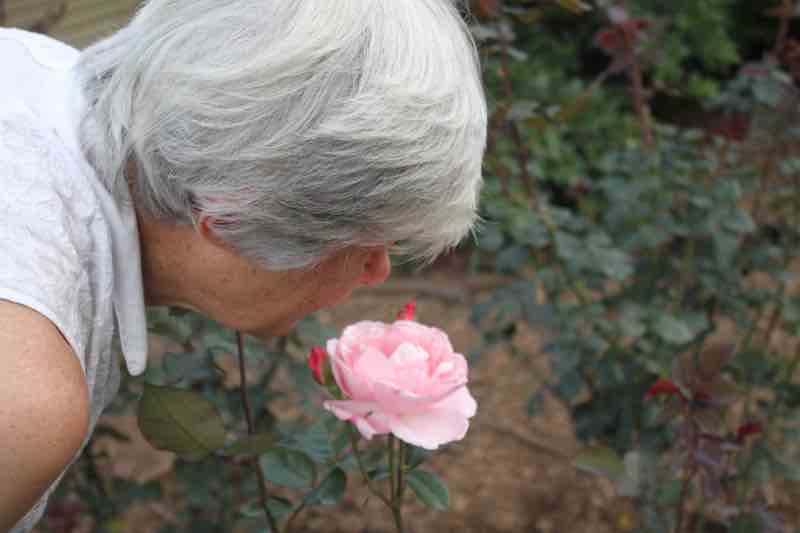
Most of us know that diet is a dirty four-letter word; it makes huge promises but a year later has delivered nothing.
They just aren't sustainable; this one is the exception. By choosing the right foods we can even regulate our genes and slow the pace of aging of our cells.
There are four pillars to the longevity diet underpinned by the work of two gerontologists.
- Dr Valter Longo
- Dr Rozalyn Anderson
- Large amounts of unrefined carbs.
- Low but sufficient protein.
- Relatively high fat mainly from vegetable sources.
- Fasting of a different sort.
Non-refined carbs
Food containing moderate to large amounts of unrefined carbohydrate is the first pillar of the longevity diet; but not in those who are obese or are insulin-resistant. They must restrict their starches to less than 50g per day until their BMIs are below 30; and preferably closer to 25.
It is without a doubt the most difficult pillar; unrefined carbs are not easy to find and we are no longer accustomed to eating them. They require a lot of chewing.
Cake flour, sugar and white rice, for example, all promote "insulin-like signalling." That regulates our genes in a way that provokes premature aging of our cells, poor health and a shorter lifespan.
In those over 65 in the absence of obesity and insulin-resistance, complex unrefined carbohydrates do not appear to increase the demand for the hormone; nor activate those detrimental glucose signalling pathways. They promote longevity.
Low but sufficient protein
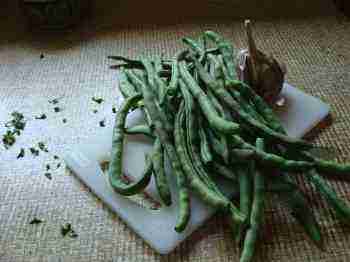
Low but sufficient mainly plant-based protein is the second pillar of the longevity diet; except in those over 65 when a larger amount is recommended to prevent frailty syndrome.
Processed meat in particular is strongly fingered with premature aging and neoplastic changes in cells. However all animal products are restricted, except fish; most of the recommended protein is from nuts, seeds and legumes.
In particular the amino acid methionine and in general proteins from animal sources are "pro-aging;" they induce the insulin and other signalling pathways that are associated with premature frailty.
This is probably because of the association between raised homocysteine and methionine from animal products in those whose diets are deficient in certain critical minerals and vitamins.
More difficult because free-range chicken and meat are not readily available, the researchers did not consider their role in the longevity diet. Would mutton from sheep that feed widely on a thousand hills have a different effect on these pathways compared to pork from pigs kept in a sty?
Would eggs and meat from free-range chickens also have an adverse affect on longevity?
Fasting-mimicking diets
Fasting in one form or another has long been associated with health benefits. Three models have come to the fore as recommended in the longevity diet.
1. Time-restricted fasting
Time-restricted fasting means eating exactly the same meals but with a 15 hour gap between supper and your morning meal; it has most of the benefits of water only for one or two days, with none of the discomfort of going completely without food. It has great proven rewards for obesity, type 2 diabetes and metabolic syndrome.
Even increasing the period between meals to 12 hours has benefits. Many of the markers of wellness such as blood glucose, insulin and HbA1c are notably improved.
New research shows that time-restricted fasting to 16 hours was twice as effective as calorie counting[5] for weight loss.
During time-restricted fasting two important findings have been made. There is significant reduced activity in the "obese-related" brain regions; and secondly the number of healthy bacteria in the gut immediately increases whilst the abundance of E.coli drops[6].
2. Periodic fasting
Periodic fasting has proved to be beneficial too in controlling the markers associated with longevity and for some has proved easier to follow; once or twice a month have water only for two days.
3. Fasting-mimicking
Better still is the "fasting-mimicking diet;" tricking the body into thinking you are going without food. The FMD means following a plant-based plan; low in protein, sugar and refined carbs but high in fat.
In particular leptin marker levels are high confirming the satiety factor in the fasting-mimicking diet; from raised amounts of fibre and fat. One is not constantly famished and we feel satisfied long after meals.
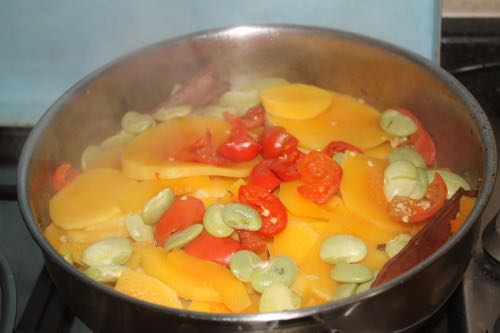
This fasting-mimicking diet supper has some protein from the lima beans, zero refined carb and plenty of olive oil. It is extremely satisfying; no hunger pangs later in the evening.
Relatively high fat
Perhaps surprisingly the longevity diet recommends relatively high fat, around 30% of calories but mostly from plant sources; olive oil, avocados and nuts. Freshly-ground seeds are good too, such as flax and sesame.
But certainly not high in seed oils.
The authors speculate that high circulating fats are not pro-aging like too much protein or glucose in the blood from refined carbs; the ketone bodies produced are the same as those from fasting.
Delayed supper
In other research a delayed supper after 9pm as compared to before 8 o'clock was found to be associated with a 28% increased risk of cerebrovascular disease[7].
And each hour increase in nighttime fasting was found to be associated with a 7% decreased risk of stroke but not coronary heart disease; enjoy an early supper and a late breakfast.
Notes on the above
Carbs
Most of us on the so-called "industrial diet," foods readily available at the supermarket, have been plied with highly refined carbs. We have become accustomed to them, assuming they are a normal part of healthy meals; and will not readily relinquish them.
In particular sugar consumption is more than three times that which is recommended, much of it in "energy drinks and colas;" 17 teaspoons per day. That is the average, meaning many are consuming far more.
Many recommendations blithely specify unrefined starches, not recognising how difficult they are to get. Corn on the cob, brown rice and quinoa are the three exceptions; and bulgur too.
Most difficult of all is that bread from 100% unrefined wholemeal is virtually non-existent.
The longevity diet means giving up commercial bread, cakes and cookies for ever; a bridge too far for the majority.
The only exception is to purchase an electric mill for 100% real flour to grind true wholemeal and use it for baking artisanal bread; and for making your own bulgur.
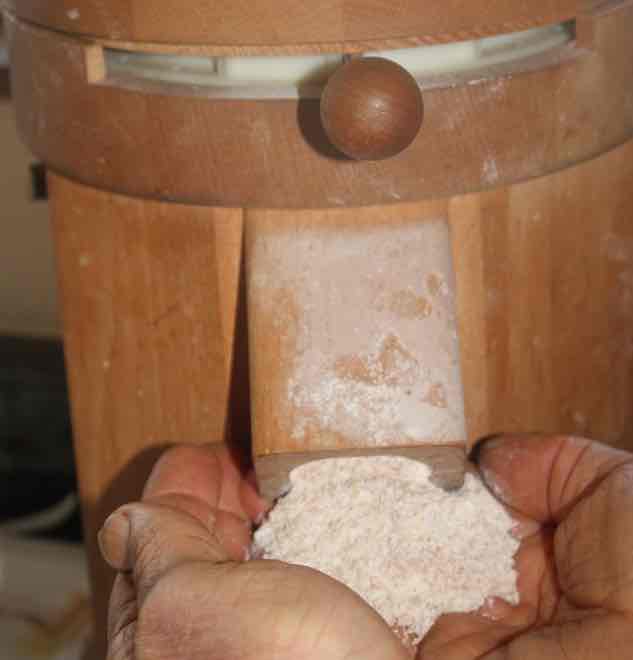
With the aid of a baking machine this true wholemeal flour can easily then be used to cook a nutritious loaf in keeping with the longevity diet.
It's noteworthy that this is done in all the Blue Zones where longevity is the norm, usually as sourdough bread.
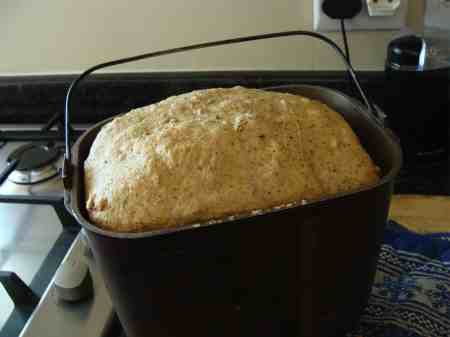
Spuds are not specifically mentioned in the longevity diet. From cold storage, particularly when baked or fried they are extremely glycemic; however new potatoes in moderation can even be enjoyed by many diabetics without extra insulin being needed.
They are eaten without peeling; more fibre and nutrients.
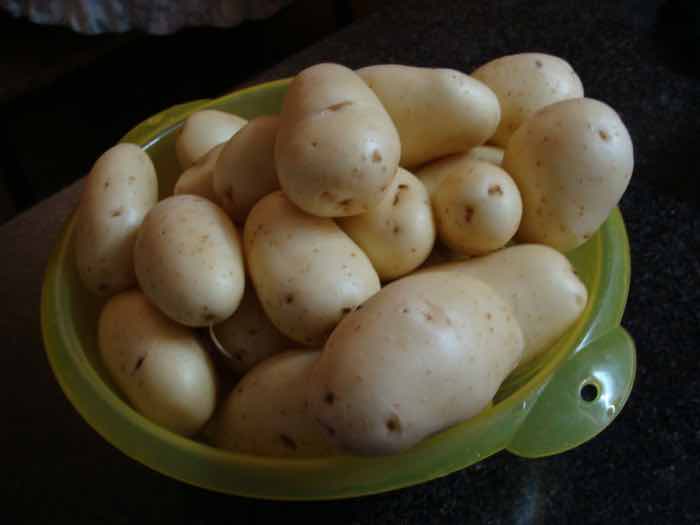
Legumes
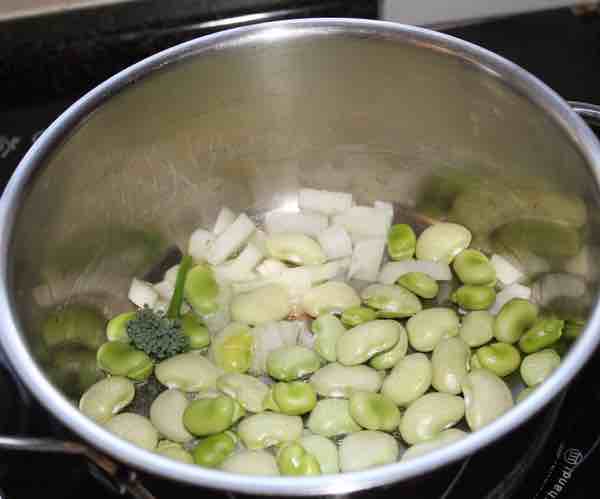 Fresh green lima and broad beans
Fresh green lima and broad beansProtein in the longevity diet comes largely from legumes and fish. Greatly reducing red meat, chicken and dairy products means turning to peas and beans for the required amino acids.
Vegans who eat no animal products are remarkably healthy in many respects with lower levels of malignant tumours, hypertension and diabetes.
However legumes are very low in methionine, that controversial but "essential" amino acid; consequently vegans often suffer from osteoporosis and have a 43% increase in all fractures[1].
We must have methionine, just not too much of it; and adequate magnesium, zinc and certain important vitamins so that our bodies can break down the homocysteine formed.
In the so-called Blue Zones where longevity is profound, folk not only eat plenty of legumes but they grow them too; the mixed broad and lima beans seen in the pot above for example.
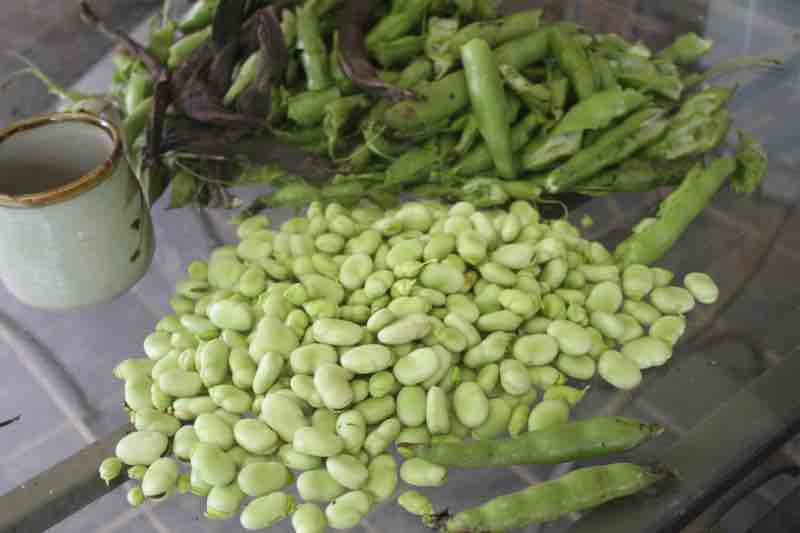 Young broad beans ready for blanching and freezing
Young broad beans ready for blanching and freezing"Moses was 120 years old when he died; his eye was not dim nor his natural force abated."
- Deuteronomy 34.7
Longevity diet
The Longevity Diet is for those who greatly desire the thought of healthy old age and are prepared to forego modern grocery store meals; those ultra-refined foods loaded with salt, sugar and animal protein.
Whilst high in lipids the LD eschews the seed oils that in the excess used today are highly inflammatory; yet ironically in small amounts they contain many essential fatty acids that we cannot live without.
These folk look forward to sitting under the trees they once planted, sipping natural wine, unprocessed coffee and tea; vigorous and zestful lives to the end. They eagerly anticipate watching the great-grandchildren grow up.
No mention of alcohol is made in the LD but disturbing evidence has shown conclusively that even small amounts of commercial wines, beers and spirits cause cancer. It would appear, though unproven that the unpasteurised natural ferments enjoyed by those in the Blue Zones where longevity is the word are excepted. Home brewing might be solution.
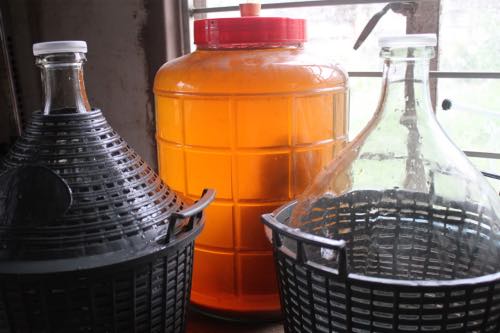
Plenty of legumes, whole grains and vegetables are recommended. It is very low in sugar and refined flour which means no commercial bread. There is little red meat but large amounts of nuts, seeds and olive oil are suggested.
Intermittent fasting in one form or another is recommended.
To sum up
Those determined to enjoy old age and look forward to "dying healthy" are prepared to make time sourcing and preparing foods not generally found in most grocery stores. They may even grow much of their own fruit and vegetables but there are organic farmers' markets.
They get most of their protein from legumes and fish but are not vegetarians.
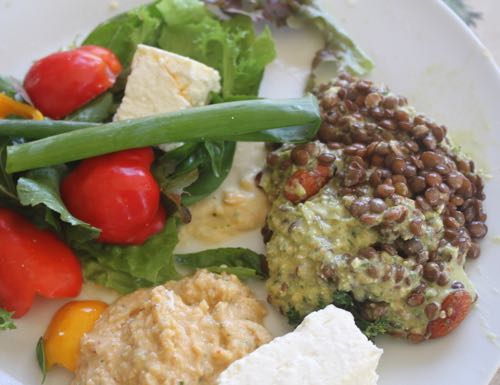
Ketogenic diets
The ketogenic diets share one pillar in common with longevity; they are relatively high in fat though not necessarily mainly from vegetable sources. That means there is considerable satiety despite there being no contribution from the fibre in legumes and whole grains.
Unlike the longevity diet keto is not nearly as sustainable; most people are simply unable to give up foundation foods like bread permanently. They both eschew refined carbohydrates though; so the commercial loaf is banned from both.
"Do not eat any refined-carbs, period."
Dr Atkins
Also many people have grave difficulties eating the large amount of meat and animal fat recommended in the ketogenic diets; they would rather choose legumes as their main source of protein.
Fibre
"We found was that if patients had sufficient dietary fiber intake, over 20 g/d, they were actually about five times more likely to respond to cancer treatment with immunotherapy; and had more prolonged survival."
- Jennifer Wargo, MD (Anderson Cancer Center)
Note that the Longevity Diet is very rich in fibre; prevention of cancer and five times better response to treatment for the disease.
- Vegan diets and risks of total and site-specific fractures
- Nutrition, longevity and disease
- Valter Longo longevity diet
- Which Factors Distinguish Superagers From the Rest of Us?
- More Weight Loss With Time-Restricted Eating
- Intermittent Energy Restriction Tied to Gut, Brain Changes
- Dietary circadian rhythms and cardiovascular disease risk
When browsing use right click and "Open Link in New Tab" or you may get a bad gateway signal.
Newsletter
Our newsletter is entitled "create a cyan zone" at your home, preserving both yourself and Mother Earth for future generations; and the family too, of course. We promise not to spam you with daily emails promoting various products. You may get an occasional nudge to buy one of my books.
Here are the back issues.
- Lifestyle and ideal body weight
- What are ultra-processed foods?
- Investing in long-term health
- Diseases from plastic exposure
- Intensive lifestyle management for obesity has limited value
- A world largely devoid of Parkinson's Disease
- The impact of friendly bacteria in the tum on the prevention of cancer
- There's a hole in the bucket
- Everyone is talking about weight loss drugs
- Pull the sweet tooth
- If you suffer from heartburn plant a susu
- Refined maize meal and stunting
- Should agriculture and industry get priority for water and electricity?
- Nature is calling
- Mill your own flour
- Bake your own sourdough bread
- Microplastics from our water
- Alternative types of water storage
- Wear your clothes out
- Comfort foods
- Create a bee-friendly environment
- Go to bed slightly hungry
- Keep bees
- Blue zone folk are religious
- Reduce plastic waste
- Family is important
- What can go in compost?
- Grow broad beans for longevity
- Harvest and store sunshine
- Blue zone exercise
- Harvest and store your rainwater
- Create a cyan zone at your home
Did you find this page interesting? How about forwarding it to a friendly book or food junkie? Better still, a social media tick would help.
- Bernard Preston homepage
- What is a Cyan Zone?
- Longevity Diet
Address:
56 Groenekloof Rd,
Hilton, KZN
South Africa
Website:
https://www.bernard-preston.com